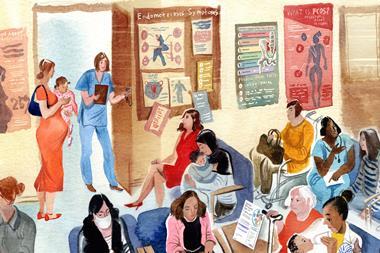For centuries, the default subject in medicine research and training has been the male. Julia Robinson talks to the scientists and clinicians trying to improve things for the other 51% of humanity
-
Historical bias in medical research: The article highlights how medical research has historically focused on males, leading to a significant gap in understanding women’s health. This male-centric approach has resulted in women being more likely to experience delayed diagnoses, misdiagnoses and adverse drug reactions.
-
Impact of sex and gender differences: It discusses how sex and gender differences affect health outcomes, emphasising the need for medical research to consider these differences. The article points out that conditions like heart attacks and chronic pain manifest differently in women, necessitating tailored medical approaches.
-
Efforts to address the gap: The article details initiatives aimed at integrating sex and gender analysis into medical research. It mentions policies and frameworks being implemented by various organisations to ensure that research includes both male and female subjects and considers sex-specific data.
-
Future directions and challenges: The article concludes by discussing the ongoing challenges and the importance of continuing efforts to close the gender gap in medical research. It underscores the benefits of inclusive research for improving healthcare outcomes for everyone, not just women.
This summary was generated by AI and checked by a human editor
Sex and gender affect all aspects of our health and wellbeing, from the risk of developing different conditions through to the way that those conditions present and how we may respond to different treatments. But historically, sex and gender have been ignored when it comes to medical research. From basic and preclinical research in cells, tissues and animals through to human clinical trials males have served as the research subject default for centuries, and it has been assumed that evidence from these male studies is equally applicable to females.
‘This would not be a big issue at all if it was the case that males and females are identical, aside from reproduction, and that we can take what we learn from males and apply it to females,’ says Bronwyn Graham, director of the Centre for Sex and Gender Equity in Health and Medicine at the George Institute for Global Health in Australia. ‘But of course, that’s not actually the case.’
And when studies have included both males and females, typically the results are not presented in a way that is disaggregated according to sex or gender where relevant. ‘What this means is that when there are sex differences, [they] aren’t being detected,’ adds Graham, who is also a clinical psychologist at the University of New South Wales. ‘So when we are using that research to develop “evidence-based interventions”, that’s really more evidence-based for males than it is for females.’
This data gap in medical research is having real-life disadvantages for 51% of the population; women are more likely to wait longer for a diagnosis, be misdiagnosed or experience an adverse drug reaction. But making medical research more inclusive of sex and gender will not just help those who are currently underrepresented, it will drastically improve health outcomes for everyone.
In this article, ‘sex’ refers to the biological attributes which differentiate females and males – such as chromosomes, hormones and reproductive organs. Whereas ‘gender’ refers to an aspect of a person’s identity, whereby a person is subjected to a range of social forces which may influence their behaviours, perception of themselves and how they are treated by others. Although this article will focus on men and women, we recognise that other gender identities exist and are also not fairly represented when it comes to medical research.
The root of the problem
From the very earliest days of medicine when Greek philosopher Aristotle characterised females as ‘mutilated males’, it has been assumed that apart from size, weight and reproductive organs, males and females are the same. The issue has been perpetuated by the fact that throughout history the fields of science and medicine have largely been dominated by men.
Understanding of male and female bodies, and how they differ, has thankfully advanced, but until relatively recently the male medical standard has perpetuated. Kate Womersley, an NHS doctor and academic specialising in psychiatry, recalls the ‘blind spots’ she encountered while studying medicine at the University of Cambridge between 2014 and 2018.
‘We did cadaveric dissection to learn anatomy, and we had a handbook that talked through all the major parts of the body … some of those were sex specific … but there was no discussion of breasts at all, as if they didn’t exist,’ she remembers. ‘That was a theme in my training – often you were taught about medicine as if the body was sex neutral.’
Graham explains that much of women’s exclusion from clinical trials comes from the now-discredited idea that women are more variable than men because of the fluctuation of hormones across the menstrual and life cycle. ‘As scientists, we don’t like variability; variability is not good for our results, it makes it harder to detect the impact of a particular experimental manipulation, and so we’re trained to do everything that we can to reduce variability,’ she says.
‘There is a perception that working with male participants is just much more straightforward,’ Womersley adds. ‘And a feeling that women are a complication to science, rather than 51% of the recipients of medical care. [There’s] the worry about menstrual cycles and how that might disrupt or muddy the data and create noise. And yet, that’s the noise of real life – that’s the noise in which women take medicine, so we need to understand it.’
Wendy Young, a leading medicinal chemist and former senior vice president at biotech company Genentech, highlights the persistent stigma surrounding discussions about the female reproductive tract. This stigma, she explains, has contributed to a chronic lack of basic research fundings – leaving us with an incomplete understanding of how hormones like oestrogen and progesterone affect women’s health. ‘There’s been a longstanding blind spot in how we train both scientists and clinicians to understand the female body,’ she says.
The sex and gender gap is also the result of fears surrounding testing a new intervention in someone who is possibly pregnant or could become pregnant in the future because of the risk it could harm the developing foetus, a fear that was compounded by the thalidomide scandal. In the late 1950s and early 1960s, when thalidomide was prescribed as a sedative and antiemetic for morning sickness in pregnant women, scientists did not know that the effects of a drug could be passed through the placental barrier. In the case of thalidomide, no tests were done involving pregnant people and it is estimated that over 10,000 babies were affected by the drug, around half of whom died months after being born.
However, as Graham points out, the thalidomide scandal was an example of a failure to adequately test a drug. ‘That wasn’t a consequence of when you include women in research, this is what can go wrong. That was a consequence of not including women in research because it wasn’t properly tested.’
Womersley says there is a need to move out from under the shadow of thalidomide. ‘Excluding women from tightly controlled studies where there is a lot of oversight, what you’re really doing is exporting that risk from a research environment which is relatively small and safe to the general public,’ she says.
Exclusive harms
The exclusion of female patients from research, partnered with the belief that studies of men apply without modification to women, has led to a major gap in our understanding of women’s health. ‘We know a whole lot less about women’s health with regards to the way that, across the lifespan, our developmental changes over the menstrual cycle, pregnancy, perimenopause and so forth impact our health,’ says Graham.
In turn, this has had a detrimental effect on the quality of healthcare women receive and their treatment outcomes. One key impact is delayed diagnosis: in 2019, a study analysing health data for almost 7 million men and women in the Danish healthcare system over a 21-year period showed that women were diagnosed later than men in more than 700 diseases.
Another is misdiagnosis. Women are 50% more likely to be misdiagnosed when they are having a heart attack than men because they experience additional symptoms. ‘They still experience left sided chest pain, and can experience pain up into their jaw, but they also more frequently feel nauseated or short of breath, and that can be distracting in terms of understanding what’s going on, so … it’s less likely to be picked up by clinicians in acute settings,’ explains Womersley.
In addition, research has shown that women have a nearly two-fold greater risk than men for having an adverse drug reaction across all drug classes and are significantly more likely to be hospitalised because of one. There are also distinct differences between men and women when it comes to how they respond to a variety of drug classes but clinical guidelines rarely provide sex-specific treatment recommendations which can often lead to suboptimal drug therapy in women.
‘There’s been very little research in general about side effects and adverse reactions to medicines, but we know that women are more likely to experience and report side effects and adverse drug reactions,’ says Womersley. ‘There really does need to be a lot more research into why that’s the case,’ she adds.
But this is not just an issue when it comes to understanding the differences between men and women. It is also about deepening our understanding when it comes to conditions that only affect women, such as endometriosis, polycystic ovary syndrome and post-partum haemorrhage. With these conditions we are only just starting to scratch the surface when it comes to research and possible treatment options; recent data collated by the Medicines and Healthcare Products Regulatory Agency and University of Liverpool, and reviewed by The Guardian, showed that the number of male-only clinical trials in the UK was 67% higher than the number of female-only.
‘There has been a lack of research and research funding into conditions which will only affect women,’ says Alison Simmons, director of research at the Medical Research Foundation, an independent UK charitable foundation supporting medical research in underfunded areas. ‘Anything associated with periods like dysmenorrhea, PMDD [premenstrual dysphoric disorder], [and] things like endometriosis – [there’s a] perception [that there’s] not much interest in them, or a lack of a market for drugs … [so] there’s just been very little research investment.’
Turning the corner
Over the past 30 years, national funding agencies have begun to implement policies to integrate sex and gender analysis into the grant proposal process, but progress has been glacial at best. In 1993, the US congress passed the National Institutes of Health (NIH) Revitalisation Act, which directed the NIH to establish guidelines on the inclusion of women and members of underrepresented racial and ethnic groups in clinical trials.
But it took over a decade for other high-income countries to follow suit: in 2003, the European Commission endorsed ‘questioning systematically whether, and in what sense, sex and gender are relevant in the objectives and methodology of projects’; in 2010 the Canadian Institutes for Health Research adopted polices to improve the integration of sex and gender dimensions in research design, followed a few years later by Horizon Europe in 2016. That same year the US NIH implemented a policy whereby scientists are expected to account for the possible role of sex as a biological variable in vertebrate animal and human studies. ‘Every application to the NIH is expected to consider sex as a biological variable as part of their research methods, unless it’s a single sex study,’ explains Young.
In 2021, the UK still lagged behind and, despite having the largest female health gap in the G20, still did not have standard, unified policy guidance for researchers. Noticing this significant gap, Womersley wrote to all the major research funding organisations – including the National Institute for Health and Care Research, Medical Research Council and Wellcome Trust – and large charitable funders such as Cancer Research UK and asked them if they had a sex and gender policy in place for the research that they funded.
‘My expectations were low, but then when I heard that not even one of these organisations had any policy in place for sex and gender inclusion, that felt like a huge oversight,’ she says.
Wanting to create a cohesive programme to bring everyone together to initiate change across UK research, Womersley and co-principal investigator Robyn Norton at The George Institute for Global Health, along with other experts in women’s health and policy, set up Medical Science Sex and Gender Equity (Message) – a UK policy initiative looking to improve the integration of sex and gender considerations in data collection, analysis and reporting in UK biomedical, health and care research. They wanted to learn from sex and gender policy work internationally and improve on what had been done before.
As well as the major funding organisations originally contacted, the team convened small charitable funders, stakeholders in the research pipeline – including major medical journals and publishers – medicine regulators, clinicians from different specialities, researchers from varying disciplines, social scientists, patients and people with lived experience, as well as the Department of Health and Social Care and NHS England. ‘We were blown away that everyone came and not just that, they stayed with us: every single organisation that started this process with Message has continued to be involved,’ Womersley says.
‘The banner, under which we all joined together, was we need to find a way that scientists can investigate sex and investigate gender without confusion … to produce new knowledge around sex and gender differences and ultimately improve outcomes for everyone.’
In April 2024, following four day-long discussion events, the policy framework was finalised and in March 2025, the NIHR launched its inaugural sex and gender policy in collaboration with Message on International Women’s Day. ‘This was a big step forward for the UK and other funders are implementing new initiatives all the time,’ says Womersley.
In the meantime, the MRC published guidance in 2022 requiring both females and males to be used in experiments involving animals, and animal and human tissues or cells, by default, and in the case of single sex experiments, asking that a strong justification be provided. The following year the MRC released a policy document on embedding diversity in research design and Cancer Research UK also set out its policy on requirements on integration of sex in experimental design, modelled on that of the MRC.
In 2022, the Medical Research Foundation – which also supports the Message initiative – started including specific questions on sex and gender inclusion on its research funding application forms, to ask researchers to at least acknowledge if there’s a gap and if they can overcome it, and ensured it was something their peer reviewers were thinking about too.
‘It doesn’t mean using equal numbers of female and male mice, because actually there’s some reasons you wouldn’t want to do that,’ says Simmons. ‘It just means, as appropriate to your experimental design, how are you going to make sure that you don’t have a data gap – and that can mean different things in every different experiment.’
Another country that has some catching up to do when it comes to having a cohesive sex and gender research policy is Australia. Graham says that it can be difficult to separate the issue of what researchers study from who has, historically, overseen what they get to study.
‘We know that in science there’s been a long history of under representation of women as well as people from other marginalised groups,’ she explains. ‘So if you have people from one particular group in society making decisions about what are the important questions to ask. What research gets funded? What are the policies that we have in place that dictate the systems of how we do science? You’re going to get a very narrow view of what matters.’
New understanding
Graham leads an interdisciplinary team that examines how female-unique factors, like fluctuating sex hormones over the menstrual cycle and pregnancy, impact the development of anxiety and other affective disorders.
Sex differences in anxiety disorders and depression tend to emerge around the time of puberty. Then, over their lifespan, women tend to be at greater risk of developing new anxiety and depressive disorders or exacerbating existing conditions around times of hormonal flux, like pregnancy and perimenopause. As a result, ‘for a really long time, female sex hormones have been blamed for all of women’s problems and inadequacies’, she says. But her work has suggested the opposite is actually true.
The main treatment for anxiety disorders is exposure therapy – which involves gradually helping people to confront the things they are afraid of – and Graham and her team have found that women are much more effective at learning to regulate their fear during periods of heightened sex hormones – specifically oestradiol – during ovulation.
‘If you administer synthetic oestrogen, that enhances women’s ability to learn these new kinds of safety memories,’ she says. ‘So rather than being the enemy, sex hormones are really important for women’s mental health, and we can harness that to improve treatment outcomes for women.’
This work has led to recommended practice guidelines – they were the first to show that when women are taking the hormonal contraceptive pill it leads to poorer outcomes for anxiety treatments compared to women who are naturally cycling – and Graham and her team are currently running a trial on panic disorders. However, she says that for this work to make it into formal guidelines, more evidence is needed to show why more people need to be doing work on women’s mental health.
But it isn’t just an issue for mental health: a sex and gender gap exists in every medical specialty. ‘There’s plenty of evidence that women and men are affected differently and disproportionately by different conditions,’ says Womersley. ‘But there are so many that we can’t possibly know about because we just haven’t been looking.’
A key example is chronic pain, which affects 20% of people worldwide, the majority of whom are women. Research suggests there is spectrum of response across sexes – a fact that would never have been revealed had it not been for studies including both male and female mice. A recent study in Science found that female hormones can suppress pain by making immune cells near the spinal cord produce opioids, stopping pain signals before they get to the brain. This finding could help explain why postmenopausal women tend to experience more pain.
As well as ensuring research is inclusive, there is a need to disaggregate data from these trials according to sex and gender and ensure this is clearly discussed in published papers. Phase three trial results for the Alzheimer’s drug lecanemab suggested that patients taking it deteriorated 27% more slowly than those who took a placebo, resulting in reduced memory decline and better cognitive function over the 18-month period of treatment than those taking a placebo.
But a subgroup analyses published this year indicated a significant 31% sex difference in the effect, and suggested no, or limited, effectiveness in females, although further studies will be needed to conclude if the drug is clinically ineffective in this group.
‘Two thirds of Alzheimer’s patients are women,’ says Womersley. ‘If lecanemab is not improving outcomes for the majority of patients who suffer from a disease we do need to report that differently.’
Looking forward
A recent NHS Confederation analysis suggested that every additional pound invested in women’s health in England would bring a return on investment of almost £11, adding an additional £319 million in total gross value added to the economy. In short, applying a sex and gender science approach does not just benefit women, it benefits everyone. ‘When you disaggregate the data, it will also give us additional insights into male conditions. It’s beneficial to everyone, and that’s why it’s also so important,’ says Simmons.
The benefits also extend to science itself; including sex and gender in research will help improve scientific rigour, producibility and quality. ‘There’s been a lot of examples now about how when we fail to consider sex and gender in science, our science is poorer for it,’ says Graham.
‘It’s great that it is becoming a conversation now,’ says Simmons. ‘And I do want to emphasise it’s not just about male and female – it’s about all different sexes and different genders.’
Many in the field will likely be feeling disheartened with the current political climate and the winding back of progress in the US; in January, the US Food and Drug Administration pulled draft guidance on improving clinical trial diversity from its website following an executive order for government agencies to dismantle diversity, equity and inclusion policies.
Then, in April, came the news that the US Department of Health and Human Services was planning to slash funding to the NIH’s 30-year Women’s Health Initiative at the end of the current fiscal year. Initiative coordinators said the termination of this contract would significantly impact ongoing research and data collection and ‘severely limit’ their ability to generate new insights into the health of older women. Although it is now thought funding will be restored, the future of the initiative remains somewhat uncertain.
‘People are on guard and worried what direction this is going to go in,’ says Young. ‘[In December 2024] the National Academies put out this report [saying] $15.7 billion should go into [advancing women’s health] – that is darn encouraging and so we’re standing taller – and then things are changing in Washington, and so how this will all land is not clear.’
But Graham says this should only ‘strengthen our resolve to push on’. ‘At the end of the day, this is about producing the best quality research that will lead to the best quality healthcare for everyone – nobody stands to lose from this. There’s a long history in the battle for sex and gender equity – the time has not come for us to end this fight here just because there’s a bit of noise.’
Julia Robinson is a science correspondent for Chemistry World

























No comments yet